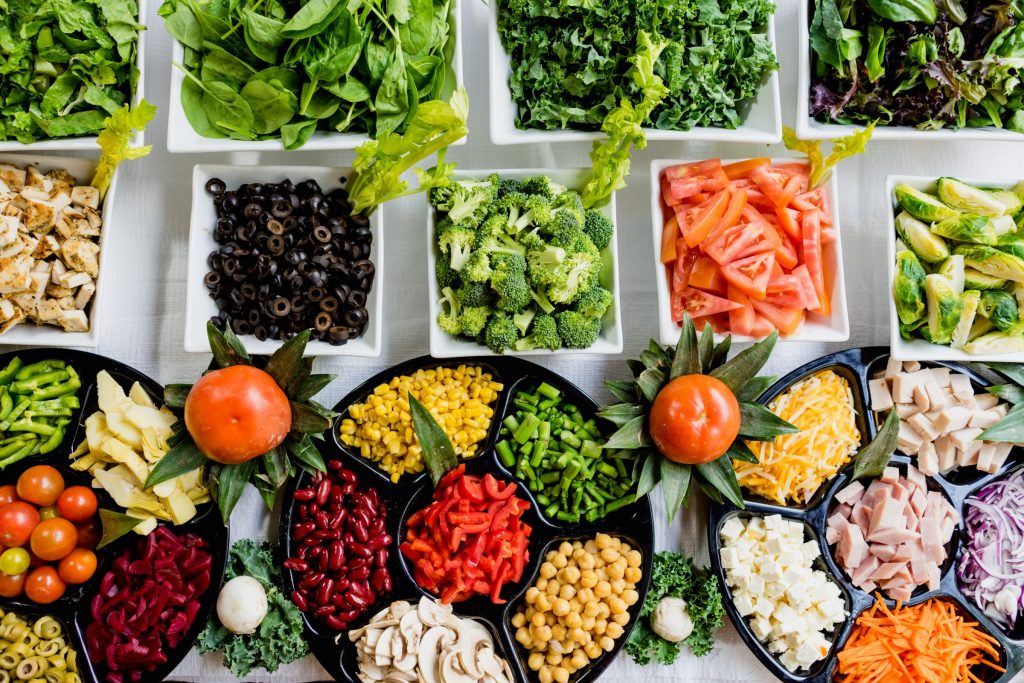Home » Community Climate Resilience Menu » Explore Our Menus » Agriculture & Local Food Systems Menu » Food Waste Management
Food Waste Management

Food waste management addresses how much food is thrown away in a community and how the waste is handled. Food waste in landfills emits methane, a potent greenhouse gas. Food waste can be reduced through practices such as proper storage, avoiding excess purchasing and preparation, and donations of excess food instead of disposal. In addition, food waste can be kept out of landfills by biodigestion and composting.
Food packaging is also food waste because it adds to the amount of waste created in the process of food production. There are many alternative options to buying food with excessive packaging. Proper management of food waste and byproducts can reduce greenhouse gas emissions, pollution, conserve resources for future generations, and can save money.
A food system that reduces food waste at all stages including farm, processing, retail, and consumption to less than 20 percent will help build local community climate resilience. Current estimates are that 30% – 40% of US food is wasted. The Estimated Amount, Value, and Calories of Postharvest Food Losses at the Retail and Consumer Levels in the United States.
Explore Our Menu
Equity & Environmental Justice
Equity & Environmental Justice – Equity and justice should be included with each part of the menu. As you explore each menu, consider the most vulnerable populations within your community. Be sure to include and prioritize these groups as you develop and plan your efforts.
View Equity & Environmental Justice
- Food systems that properly manage food waste should be inclusive and diverse. Be sure to consider and consult all possible user and producer groups, including but not limited to: ethnicities, cultures, socioeconomic statuses, etc.
Education & Information
Education & Information – provide education and information ideas and resources. These are intended to be some of the first steps a community can take to address certain subsections.
View Education & Information
- Provide education and information about food waste management:
- Identify community sectors that tend to produce the most food waste and target education and advertising there:
- Encourage consumers to use reusable packaging alternatives:
Low-Cost Strategies
Low-Cost Strategies – are focused on strategies and accompanying resources that usually will not require intensive staff capacity, fiscal resources, and may be done through staff decisions.
View Low-Cost Strategies
- Provide education on liability exemptions for food donations:
- Safe & Healthy Food Pantries
- USDA toolkit for starting a Gleaning Organization
- Encourage retailers and farmers to donate food that is still safe and nutritious, but no longer saleable in a grocery store, to food pantries, food banks, community kitchens, animal rescues, rehabilitation centers, or other organizations: NRDC Label Dates
- Provide education and information about packaging reduction, packaging options, and disposal:
- Host workshops and develop demonstration sites to teach about composting and waste disposal strategies on public property.
- Create community compost and recycling drop-off events.
- Encourage food waste donations from processors, farms, and retailers to livestock operations.
- Include diverse and representative populations from the community in the planning and implementation of food recovery policy.
Significant Resource Deployment
Significant Resource Deployment – are strategies that may require more staff capacity, increased fiscal resources, and larger, possibly cohesive decisions.
View Significant Resource Deployment
- Develop community composting sites.
- Create incentive programs for households and businesses to compost and recycle.
- Create and operate compost and recycling pickup opportunities:
- Work with community partners to establish and support food banks or food pantries:
- Install a biodigester for disposing of unusable food waste.
- Capture and use methane emissions from landfills:
- Assess municipality for the amount of food waste and what measures can be taken to reduce waste:
- Consult public health department and adhere to food safety and packaging regulations while reducing single-use packaging:
Celebrating Successes
Celebrating Success – are actions and strategies for communities to celebrate and keep the momentum going. They will help address positive outcomes of previous strategies taken and inspire further action.
View Celebrating Successes
- Tally the pounds per month of waste diverted from landfills from composting and/or recycling and celebrate with the community to calculate savings in disposal fees and carbon emissions.
Grants & Funding
Grants & Funding – help communities support actions through financial means such as grants and other resources.
View Grants & Funding
- Apply for grants for composting and recycling:
Example in Action: Food Waste Management
The Oregon Department of Environmental Quality funded the Oregon Wasted Food Study: Institutional and Commercial Sector Case Studies in 2017 and 2018, to investigate the quantities, types and causes of wasted edible food in Oregon’s commercial sectors. This study was conceived as a companion study to the Wasted Food Measurement Study, which focused on residential wasted food.






